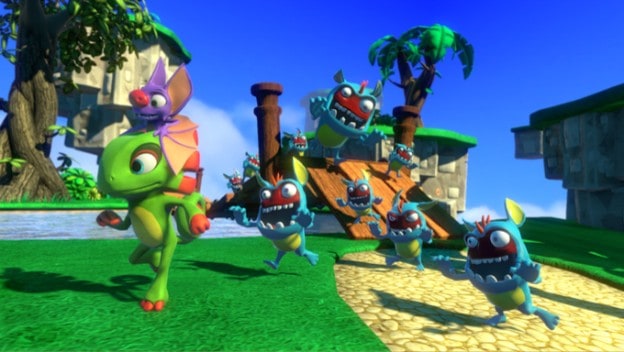Depending on who you ask, Yooka – Laylee either feels like a true spiritual successor to Banjo-Kazooie or a subpar fan tribute. It also either satiates your nostalgic longing for a 3D collectathon or it emulates that experience too well, warts and all. I know in the past that I said I like seeing games with mixed receptions so I can better compare the pros and cons, but I was not expecting the scattered results Yooka – Laylee received on Metacritic. Again, depending on who you ask, we might still be waiting for Banjo-Threeie after all, and Playtonic may or may not be the ones to do it.
Kickstarter is a beautiful platform for veteran developers to either create something weird or, more pertinent to this article, the spiritual successors to our favorite classics. And why shouldn’t we trust them? We’ve played their games, and we trust their stories that tug our heartstrings towards taking action. They’ve got to be the perfect developers for the job, right? But sometimes, something goes wrong. News articles containing information about new features or hardships leave us cautiously optimistic. Maybe the news ends there before project creators contact their backers, maybe more scandals accrue. And finally, when the game is finally released, you’re left feeling either satisfied or dissatisfied. .
Videogamedunkey recently uploaded a review of Yooka-Laylee in which he made some astute points. He prefaced his video discussing the design differences between Banjo-Kazooie and Banjo-Tooie – the former he loves, the latter not so much. But it wasn’t until he pointed out some stray observations, such as how characters in Yooka – Laylee don’t seem to interact with the environment as do the ones in the N64 classic on which it’s based, that I realized that developers and fans seem to have different opinions when it comes to what makes a franchise a, well, franchise.
I myself have similar criticisms for franchises that I feel have strayed from the original’s vision. Take, for instance, Kingdom Hearts . The original is a magical adventure and a test in open-mindedness. All of its successors have improved upon the original’s technical limitations, and yet I feel like they’re missing something crucial. The Disney villains in Kingdom Hearts felt like they played a major role in the story, so when the reveal of a Final Fantasy -like villain rcomes, it felt like a pleasant surprise; nowadays, Jafar and the rest feel insignificant and Sephiroth clones run rampant. And yet, I’m not the one creating these games: Tetsuo Nomura and his team are still developing them. What the hell do I know?

There might be a platitude of budget-related reasons for not including every single feature you’d expect from Banjo-Kazooie into Yooka – Laylee . It could also be that some of those features felt less important to the developers as they would for the fans. But I do believe that it’s the little things that make up the core of a game – pause screen music, character animations when players are inactive, and so on. It doesn’t matter if you’re creating a spiritual successor like Yooka – Laylee or a remake like Conker: Live and Reloaded . If something is missing, the vocal minority will let you know.
This isn’t an article arguing against change. I want the next Yooka -Laylee to blow Banjo-Kazooie out of the water. But I am worried that the next games that escape the Kickstarter pipelines will meet similar critical reception, like Koji Igarashi’s Bloodstained: Ritual of the Night . I’m hoping for the best, but I’m also hoping that it goes beyond Castlevania: Sympathy of the Night’s legacy. Otherwise, we might notice the wears and tears more easily.
